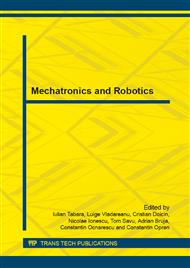p.201
p.205
p.213
p.219
p.225
p.233
p.243
p.249
p.255
Robotic Arc Welding from Flexible Automation to the Advanced Control of Process and Movement
Abstract:
The most used joining process in industry today is the electric arc welding, EAW. After recalling the principle of the process, the authors present that development of EAW in the last half century is mainly due to the mechanization and automation. Earlier only rigid-type automation forms were used, for highly repetitive mass production – but later the industry requests demanded to find flexible forms of automation, capable of providing a diversified production based on welding and its related processes. Ways are then exemplified concerning mechanization of processes currently used in the industrial field: driving devices for the welding head having one or more axes, simple and complex rotation movements etc. The authors present both important developments of the essential components of EAW robotic systems, as well for robots and for welding equipment, developments that brought these systems to the current levels. The paper also proposes a new concept of programming robotic arc welding systems, consisting in maintaining the two arc ends on both TCP’s, one of the robot and the other of the workpiece. Then modern control methods developed for the welding process are described: programming the evolution of arc parameters in relation to the time; controlling of variation limits and directing the transfer of metal and energy through the arc. Finally, some examples and applications of robotized arc welding and related processes are presented.
Info:
Periodical:
Pages:
225-232
Citation:
Online since:
May 2015
Authors:
Keywords:
Price:
Сopyright:
© 2015 Trans Tech Publications Ltd. All Rights Reserved
Share:
Citation:


